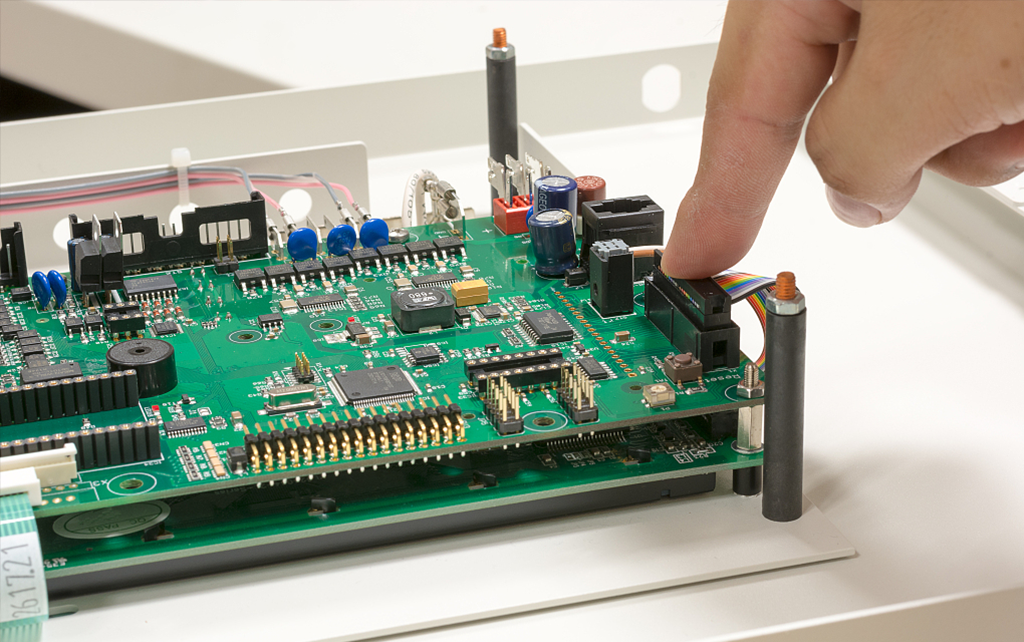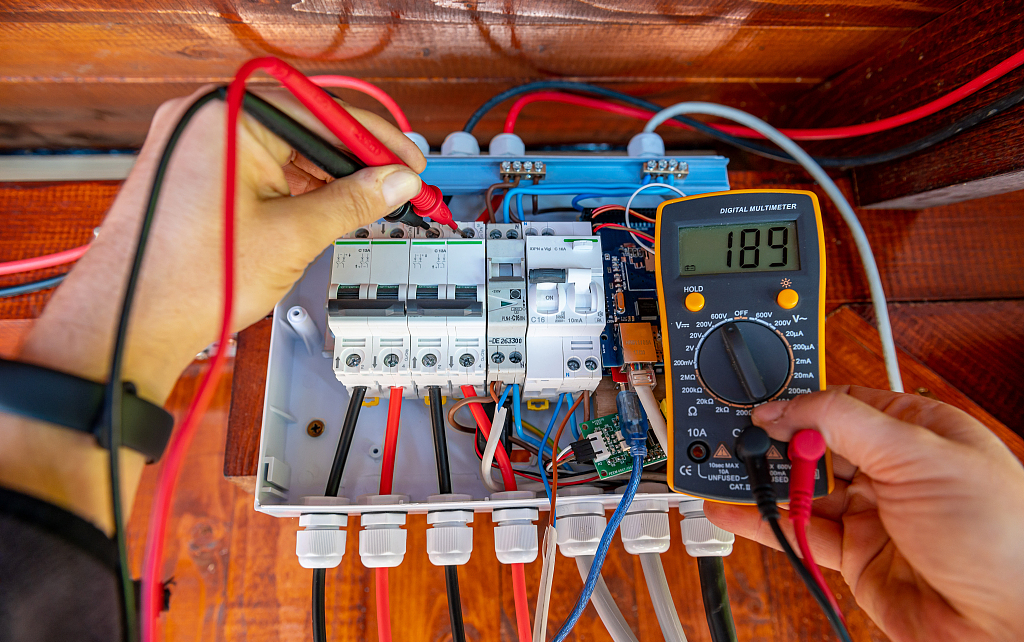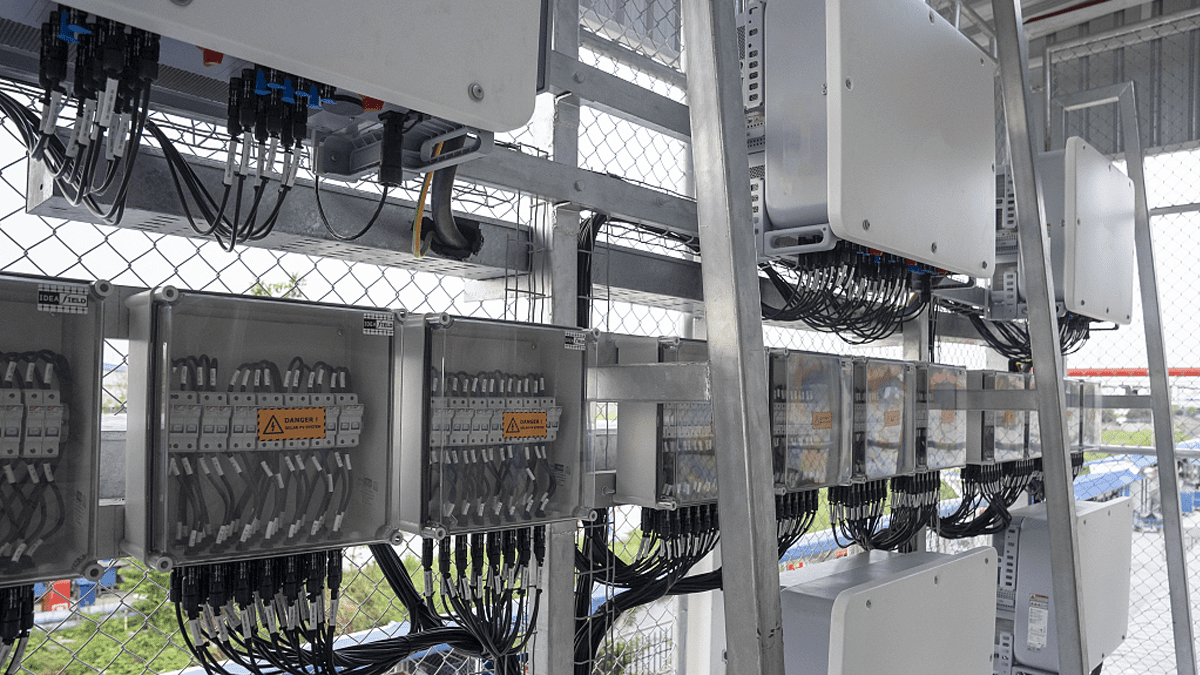Ultra-intelligent Wind and Solar Hybrid Controller: A New Generation of High-Performance Wind Turbine Control Equipment
1: Overview
The ultra-intelligent wind and solar hybrid controller is a new generation of high-performance new energy application control equipment. It is designed based on our ultra-high-performance controllers, condensing many years of application experience.
This controller incorporates features such as waterproof design, dust-proofing, salt spray resistance, operating wiring error prevention, wind turbine wind limit control, and energy management. Whether it is used for charging control or street light control, it excels in performance. The controller adopts a layered, building block structure to match various applications. With different functional board compositions, it can be easily customized for specific applications.

2: Performance Features
2.1 Waterproof Design
The controller features a line board three-proof processing and a layered structure design, ensuring that even in the presence of a small amount of water, the device remains undamaged.
2.2 RS232 Communication
RS232 communication is a standard feature of the controller, enabling convenient monitoring using computer software. Additionally, RS485 and short-distance wireless options are available. The controller also uses USB to RS232 components, facilitating data exchange with computers (USB interface compatible).
2.3 Safety Wiring
To enhance safety, the controller employs wiring terminals with injection molding technology. This design prevents wiring short circuits and accidental contact with the lines, ensuring safer operation for customers.
2.4 Reverse Battery Connection Protection
Wind Turbine Governor includes reverse battery connection protection, which prevents equipment damage and fire hazards caused by wiring errors. It also provides better protection for the battery. In case of reverse battery connection, the controller automatically triggers an alarm and provides a prompt. Continuous reverse connection of the battery input does not cause damage, and an audible alarm is sounded.
2.5 Reverse Connection of Photovoltaic Panels Protection
The controller features automatic alarm and prompt systems to prevent reverse connection of photovoltaic panels. Continuous reverse connection of the PV panel input terminal does not cause damage, and an audible alarm is sounded. This feature prevents wiring errors, especially during nighttime construction (Note: Reverse connection detection during nighttime wiring requires manual key intervention).

2.6 Continuous Short Circuit Output Protection
The discharge output of the controller is equipped with continuous short-circuit output protection and over-current protection. It automatically recovers after the abnormality is eliminated. This protection mechanism avoids damage to the controller and prevents fire hazards caused by the failure of electric equipment, particularly in the case of a short circuit.
2.7 Patented Fan Steady Speed Power Generation Control Technology
The controller incorporates a patented fan steady speed power generation control technology. This method ensures that the fan does not operate at an excessive speed. Even in strong winds, the fan can be limited to a set speed during continuous power generation, preventing direct braking due to high wind speeds. This technology significantly improves fan power generation and ensures safe operation.
2.8 Patented Fan Stall Current Limiting Power Generation Control Technology
The controller utilizes a patented fan stall current limiting power generation control technology. This method prevents the fan from running on overcurrent, protecting the expensive generator from damage caused by overcurrent-induced heating.
2.9 Turbine Input MPPT Generation Technology (Boost Type)
The controller offers automatic turbine input maximum power tracking (MPPT) mode or a 5-segment matching curve input configuration mode (input speed versus input current or input voltage versus input current curve). These options maximize turbine power generation efficiency, especially in low wind speeds.
2.10 Multiple Output Mode Selection
The controller provides a variety of output modes to choose from, including light control, time control, morning light, PWM dimming, and reverse. This flexibility allows for easy adaptation to different applications.
2.11 Comprehensive Monitoring and Statistics
The controller screen displays conventional fan, photovoltaic, battery, output current, voltage, and power information. It also shows cumulative power generation for the fan and photovoltaic panels, battery remaining power, fan speed, and unloading current. This comprehensive monitoring and statistical data provide valuable insights into the system’s performance.
Learn More:A review on wind turbine control and its associated methods – ScienceDirect

